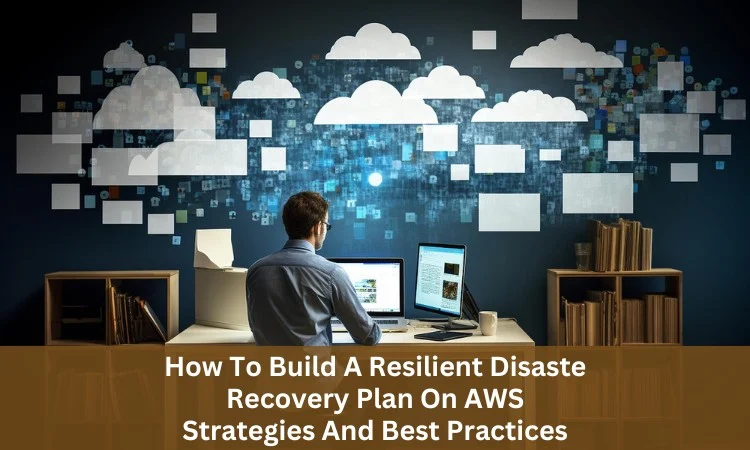Understanding Disaster Recovery On AWS
Disaster recovery refers to the strategies and processes that organizations implement to quickly restore operations following a disruptive event. AWS provides a scalable, flexible, and cost-effective platform to develop DR strategies tailored to an organization’s specific needs. By leveraging AWS’s global infrastructure, businesses can achieve rapid recovery times and minimize downtime, thus maintaining their competitive edge.
Key Components Of A Disaster Recovery Plan On AWS
Before diving into the strategies and best practices, it’s crucial to understand the key components that make up a disaster recovery plan on AWS:
- Recovery Time Objective (RTO): This defines the maximum allowable downtime after a disruption. The RTO helps in determining the speed at which systems must be restored.
- Recovery Point Objective (RPO): This specifies the maximum amount of data that can be lost during a disaster, measured in time. The RPO is critical in determining how frequently data should be backed up.
- AWS Regions And Availability Zones: AWS operates across multiple geographic regions and availability zones, allowing for the deployment of resources in isolated locations to protect against regional failures.
- Data Replication And Backup: Ensuring that data is regularly backed up and replicated across multiple locations is essential for minimizing data loss and enabling quick recovery.
- Automation And Orchestration: Automation tools, such as AWS Cloud Formation and AWS Lambda, play a vital role in executing DR plans quickly and accurately, reducing the chances of human error.
Strategies For Building A Resilient Disaster Recovery Plan On AWS
Developing a disaster recovery plan on AWS involves selecting the right strategy based on your organization’s RTO and RPO requirements. Below are four common strategies, ranging from least to most resilient:
1. Backup And Restore
Overview: This is the simplest and most cost-effective DR strategy. Data is backed up to AWS storage services like Amazon S3, and in the event of a disaster, systems are restored from these backups.
Use Case: Suitable for non-mission-critical applications where the RTO can be several hours or days.
Best Practices
- Regularly schedule backups using AWS Backup or Amazon S3 Lifecycle policies.
- Use Amazon S3 Glacier for long-term data retention at a lower cost.
- Test your backup and restore processes periodically to ensure data integrity and recovery speed.
2. Pilot Light
Overview: This approach keeps a minimal version of your environment running on AWS, often called the “pilot light.” In the event of a disaster, you can quickly scale up this pilot light to full operation.
Use Case: SSuitable for applications that require a lower RTO and RPO than the backup and restore strategy.
Best Practices
- Continuously replicate critical data to a pilot light environment using AWS services like Amazon RDS and AWS Database Migration Service.
- Automate the scaling up of the pilot light environment using AWS Auto Scaling and AWS Elastic Load Balancing.
- Ensure that the pilot light environment is configured correctly and kept up to date with production environments.
3. Warm Standby
Overview:The warm standby approach involves maintaining a scaled-down but fully functional copy of your production environment on AWS. In the event of a disaster, this environment can be quickly scaled up to handle production traffic.
Use Case: Ideal for applications that need to be quickly available after a disaster, with a moderate RTO and RPO.
Best Practices
- Regularly update the warm standby environment to mirror production systems, including data and configuration changes.
- Use AWS Elastic Beanstalk or AWS OpsWorks to deploy and manage your standby environment.
- Test failover procedures regularly to ensure quick and smooth transition during a disaster.
4. Multi-Site (Hot Standby)
Overview:The most resilient strategy, the multi-site approach, involves running production environments simultaneously across multiple AWS regions. This ensures that even if one region goes down, another can immediately take over.
Use Case:Essential for mission-critical applications where downtime must be minimized to near-zero (RTO and RPO).
Best Practices
- Deploy your application across multiple AWS regions using Amazon Route 53 for DNS failover.
- Utilize AWS Global Accelerator to improve availability and performance by directing user traffic to the closest and best-performing AWS region.
- Regularly conduct failover tests and chaos engineering exercises to identify and address potential vulnerabilities.
Best Practices For Disaster Recovery On AWS
Regardless of the strategy you choose, the following best practices will help ensure your disaster recovery plan is effective:
Data Encryption: Always encrypt data at rest and in transit using AWS Key Management Service (KMS) to protect sensitive information.
Monitoring and Logging: Use AWS CloudWatch and AWS CloudTrail to monitor your environment and log activities, helping you detect and respond to issues in real time.
Regular Testing: Disaster recovery plans must be tested regularly to ensure they work as expected. This includes simulating disasters and running failover drills.
Cost Management: Continuously evaluate your DR strategy to balance resilience with cost-effectiveness. AWS Cost Explorer and AWS Budgets can help monitor and manage expenses.

